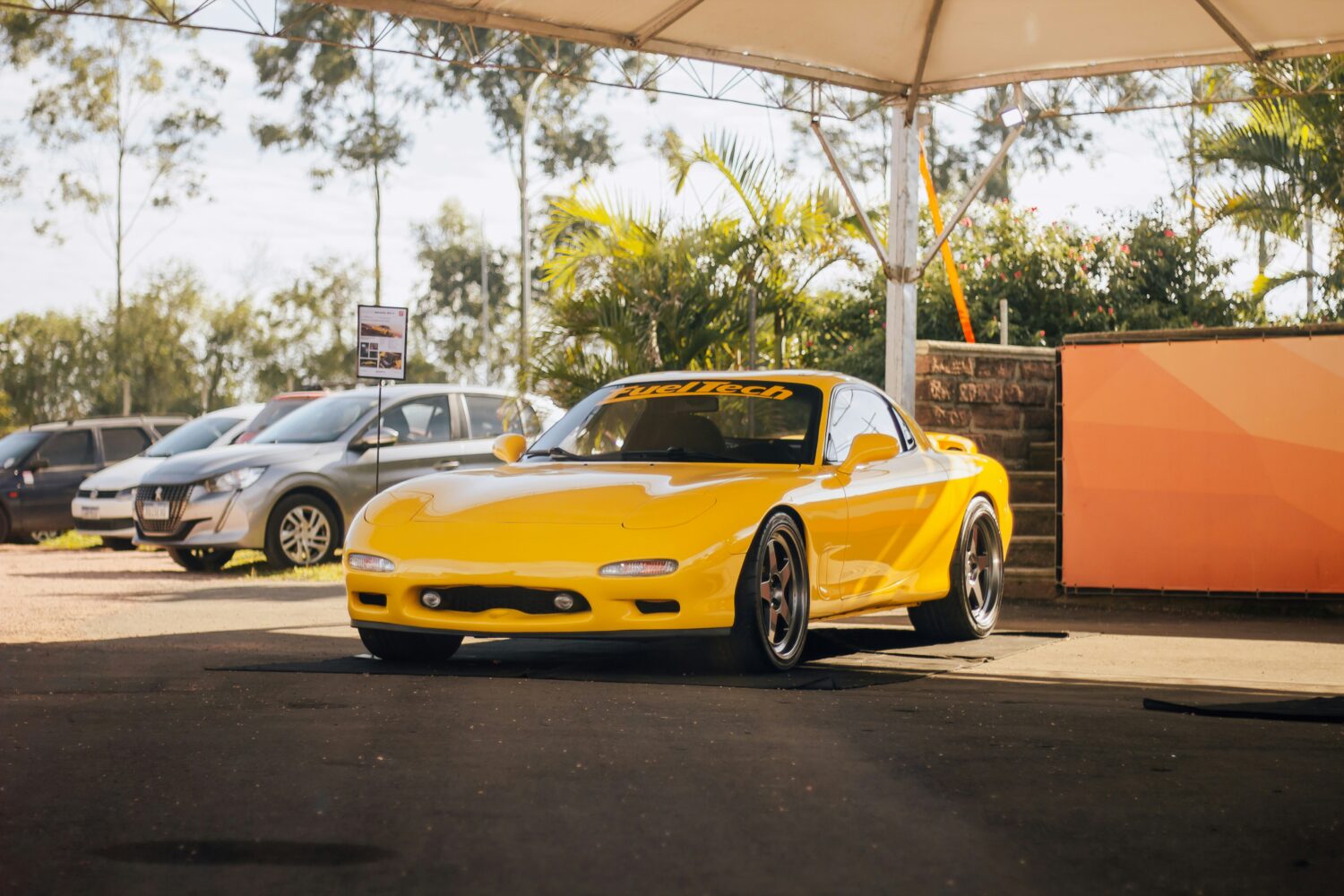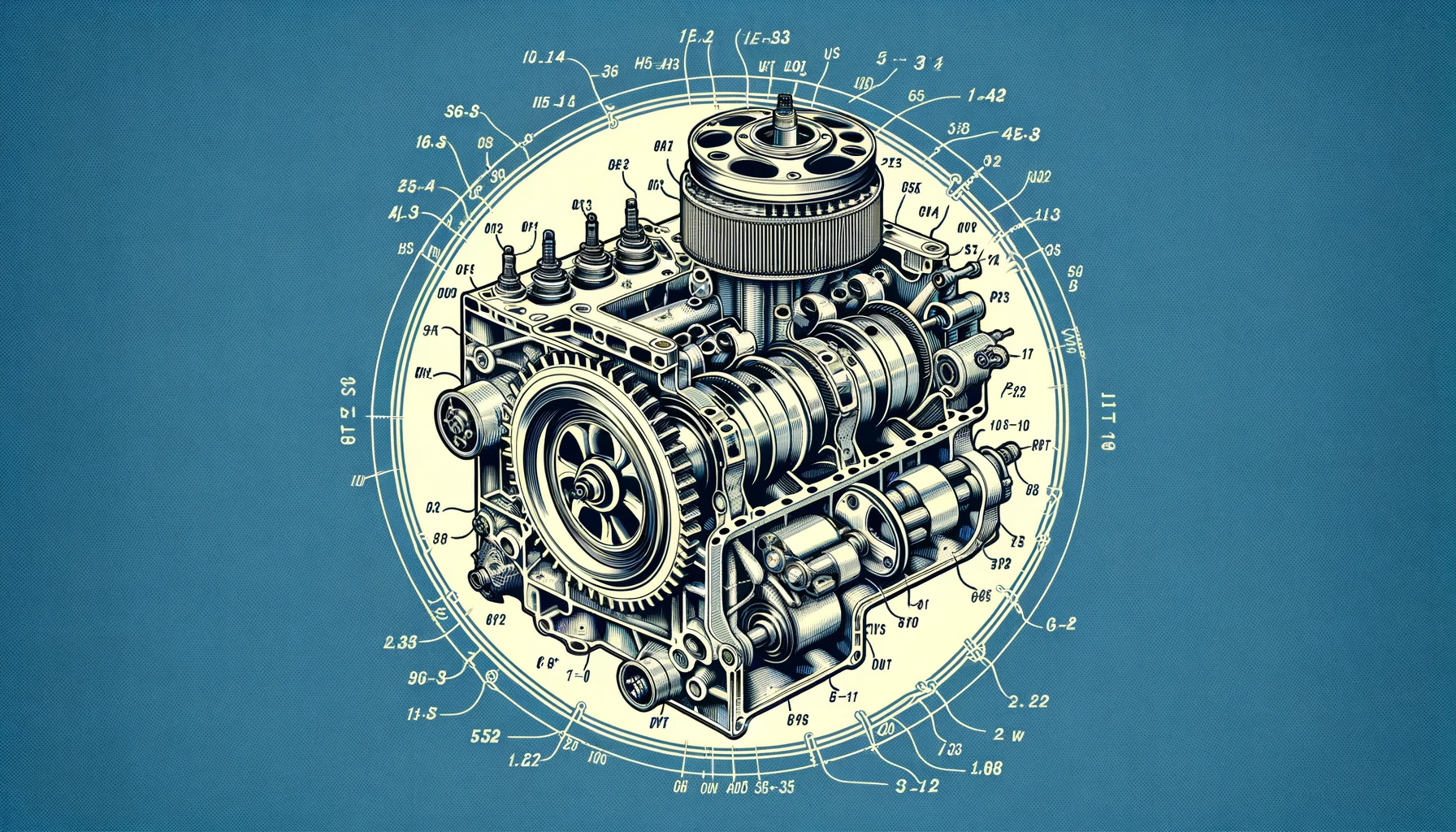If you’ve ever encountered a Mazda RX-7 in real life, you might have noticed that it sounds a little different than other cars, especially when it’s rapidly accelerating. We’re so accustomed to cars with piston engines that it’s hard to imagine there could be any other way to power your car. But in the mid-20th century another kind of engine began appearing in cars from Germany to Japan. The rotary engine, often referred to in the context of automobiles as the Wankel rotary engine, is a type of internal combustion engine that uses a design radically different from the conventional piston engine.
Unlike traditional engines that use reciprocating pistons, the rotary engine employs a design where a triangular rotor orbits in an epitrochoidal motion within a chamber, completing all four strokes of the Otto cycle (intake, compression, power, and exhaust) in different regions of this chamber. This results in a compact, lightweight engine that can achieve high power outputs relative to its size.
Origins of the Rotary Engine
The rotary engine was invented by Felix Wankel, a German engineer, who began conceptualizing the engine in the 1920s and filed his first patent in 1933. However, it wasn’t until the 1950s that Wankel, collaborating with NSU Motorenwerke AG (now part of Audi), developed the first practical version of the rotary engine. The first running prototype, the DKM motor, was completed in 1957, and the more practical KKM motor design (which closely resembles the rotary engines used in cars) followed soon after.
The simplicity of design, compactness, smooth operation, and potential for high power output made the rotary engine attractive for automotive applications. One of the first cars to utilize the Wankel rotary engine was the NSU Spider, introduced in 1964. This marked the beginning of the engine’s use in consumer vehicles.
Despite its advantages, the rotary engine faced challenges, including lower fuel efficiency, higher emissions compared to piston engines, and durability issues, particularly concerning apex seals. These challenges, combined with increasingly strict emissions regulations worldwide, have limited the widespread adoption of rotary engines in recent years. However, Mazda has continued to explore the use of rotary engines, including their potential role in hybrid powertrains and as range extenders for electric vehicles, suggesting that the rotary engine may still have a future in the automotive industry.
Driving a car equipped with a rotary engine versus one with a conventional piston engine presents a uniquely different experience, shaped by the fundamental contrasts in their mechanical designs and operation characteristics. Rotary engines are known for their smoothness and high-revving nature. This smooth operation is a result of the rotary engine’s design, which eliminates the reciprocating motion of pistons and instead utilizes a spinning rotor. This leads to significantly less vibration and noise compared to piston engines, providing a more refined and quieter ride.
Advantages and Challenges
Another characteristic aspect of the rotary engine is its ability to rev higher than most piston engines, which translates into a distinctive driving experience. The lack of heavy reciprocating parts allows the rotary engine to spin more freely, reaching higher RPMs that result in a linear and rapid power delivery. This high-revving capability not only contributes to the engine’s performance but also to the exhilarating sound it produces, which is often described as a smooth, whirring noise distinct from the roar or growl of traditional piston engines.
However, these benefits come with their own set of challenges. Rotary engines have historically been less fuel-efficient and more prone to emitting higher levels of emissions than their piston counterparts. This difference in fuel economy and emissions performance can affect the practicality of owning and operating a rotary-engined car, particularly for those concerned with fuel costs and environmental impact.
Maintenance and reliability perceptions also differ between rotary and piston engines. Rotary engines require specific care, particularly in areas like oil consumption and managing carbon buildup, which can be more demanding or less intuitive than with piston engines. The unique requirements of rotary engine maintenance, combined with its sensitivity to neglect, mean that owners often need a deeper understanding of their vehicle’s operation to ensure longevity and optimal performance.
Operating a car with a rotary engine offers a distinct blend of smoothness, performance, and sound, setting it apart from the piston engine experience. However, this comes with trade-offs in fuel efficiency, emissions, and maintenance considerations, making it a unique choice for automotive enthusiasts drawn to its unique characteristics and willing to embrace its quirks.
The narrative of rotary engines being replaced by piston engines in automobiles isn’t entirely about replacement but rather about the dominance of piston engines from the start and the rotary engine’s role as an alternative design that never became mainstream. The piston engine has been the predominant choice for automobile manufacturers since the inception of the automotive industry, due to its relative simplicity, versatility, and the vast body of knowledge and experience manufacturers have accumulated over decades of development.
Wankel rotary engines introduced a novel approach to internal combustion with advantages in compactness, smoothness, and a high power-to-weight ratio. However, they also presented challenges that limited their widespread adoption. These challenges included lower fuel efficiency, higher emissions, and concerns over reliability and longevity, particularly regarding the wear of the rotor’s apex seals.

The RX-7 Effect
The period when rotary engines found their most significant application in automobiles was mainly the 60s through the early 90s. Mazda became the most notable manufacturer to adopt and significantly advance the development of the rotary engine for automotive use. The company’s first rotary-engined car, the Mazda Cosmo Sport 110S, was launched in 1967. Mazda continued to refine and improve the rotary engine, achieving considerable success in both consumer markets and motorsports. The Mazda RX-7 and RX-8 are among the most famous sports cars powered by rotary engines, with the RX-7 in particular achieving cult status among car enthusiasts.
The oil crisis of the 1970s highlighted the rotary engine’s drawbacks in fuel economy, which became a significant concern for consumers and regulators. Meanwhile, advancements in piston engine technology, such as improvements in fuel injection, turbocharging, and emissions control, helped piston engines achieve better fuel efficiency and lower emissions.
As environmental regulations became stricter, particularly from the late 20th century into the 21st century, the difficulty in making rotary engines comply with these new standards without significant compromises became apparent. Concurrently, the continued evolution of piston engine technology, including the development of hybrid and electric powertrains, further solidified the piston engine’s place in the automotive market.
While Mazda continued to explore the potential of rotary engines, even into the 21st century with the RX-8, the transition away from rotary engines wasn’t so much a shift as it was a gradual decline in their use for mainstream vehicles. The automotive industry’s overarching trends towards improved efficiency, lower emissions, and the rise of electric vehicles have shaped the current landscape, where piston engines dominate, complemented by the growing presence of electric motors.
An Electric Future For Rotary?
Mazda and other entities have continued to investigate potential applications for rotary engines, including their use as range extenders for electric vehicles, indicating that while the rotary engine may have receded from the forefront of automotive powertrains, it hasn’t disappeared entirely.
Companies like Mazda are considering the use of rotary engine technology for electric and hybrid vehicles primarily because of the unique advantages that rotary engines offer, which align well with the specific demands of electrification. The compact size and lightweight nature of the rotary engine make it an ideal candidate for use as a range extender in electric vehicles. A range extender is a small engine used to generate electricity to recharge the battery pack, thereby increasing the vehicle’s range without the need for a larger, heavier battery. The rotary engine’s smooth operation also contributes to a more pleasant driving experience, an important consideration in the passenger vehicle market.
Another advantage of the rotary engine is its ability to run at a constant optimal speed, which is ideal for generating electricity efficiently. This can potentially make electric vehicles with rotary range extenders more appealing to consumers concerned about range anxiety, the fear of running out of battery power far from a charging station. Furthermore, the rotary engine can be designed to run on various types of fuel, including potentially cleaner alternatives like hydrogen or biofuels, making it a versatile choice for future propulsion needs.
The question of whether the use of rotary engines in electric and hybrid vehicles could become a larger trend in the automotive industry looms large as hybrid and electric vehicles gain traction in the market. Advancements in rotary engine technology to address past issues like fuel efficiency and emissions, developments in battery technology and electric vehicle infrastructure, and changing regulatory and market demands are all factors that could determine whether the resurgence of rotary engines is a pipe dream or concrete reality.
While the global automotive industry has rapidly expanded its electric vehicle output, the integration of technologies like the rotary engine as range extenders could offer a transitional solution that combines the benefits of electric drive with the assurance of extended range. However, the widespread adoption of this approach will be influenced by how well these systems compete with other technologies, such as improvements in battery energy density, charging infrastructure, and fully electric powertrains.
The consideration of rotary engines for electric and hybrid vehicles by companies like Mazda highlights the ongoing innovation within the automotive industry to meet future mobility needs. While it’s an intriguing proposition, the extent to which it will become a larger trend depends on technological, regulatory, and market developments in the coming years. The automotive industry’s focus on sustainability and emission reduction, along with consumer demands for greater convenience and range, will ultimately guide the role of rotary engine technology in future vehicle designs.





